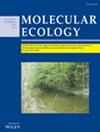Seascape Genomics of Elacatinus punctiulatus (Ginsburg, 1938): Understanding the Historical and Contemporary Drivers of Population Structure in the Gulf of California
Abstract
The genomic diversity and population structure of marine species represents a complex mosaic shaped by historical and contemporary environmental seascape features that maintain or alter it over time. The Gulf of California (GC) is an interior sea with a dynamic history during its formation and a contemporary environmental and oceanographic complexity; hence, it is a suitable system to test the effect of historical and contemporary factors on genomic diversity in marine species. We investigated the genomic seascape of the redhead goby (Elacatinus puncticulatus; Ginsburg, 1938), a cryptobenthic marine fish, to gain insights into the historical and contemporary drivers shaping its population structure in the GC. A total of 4802 SNPs markers were analysed, with 3775 loci classified as neutral markers and 27 as outlier markers potentially under selection. Both markers demonstrated population structure, with the neutral markers showing two main groups corresponding to northern and southern locatities. The outlier markers identified an additional genetic group emerging in the central area of the sampled localities. Genetic differentiation between the North and South regions and historical demographic simulations was consistent with ancient divergence (1.04 Mya) and secondary contact (0.15 Mya). The genomic environmental association analysis revealed a possible adaptive scenario linked to ocean temperature. The study highlights the importance of historical events, contemporary environmental factors, and oceanographic circulation in shaping the genetic structure of E. puncticulatus populations in the GC.

 求助内容:
求助内容: 应助结果提醒方式:
应助结果提醒方式:


